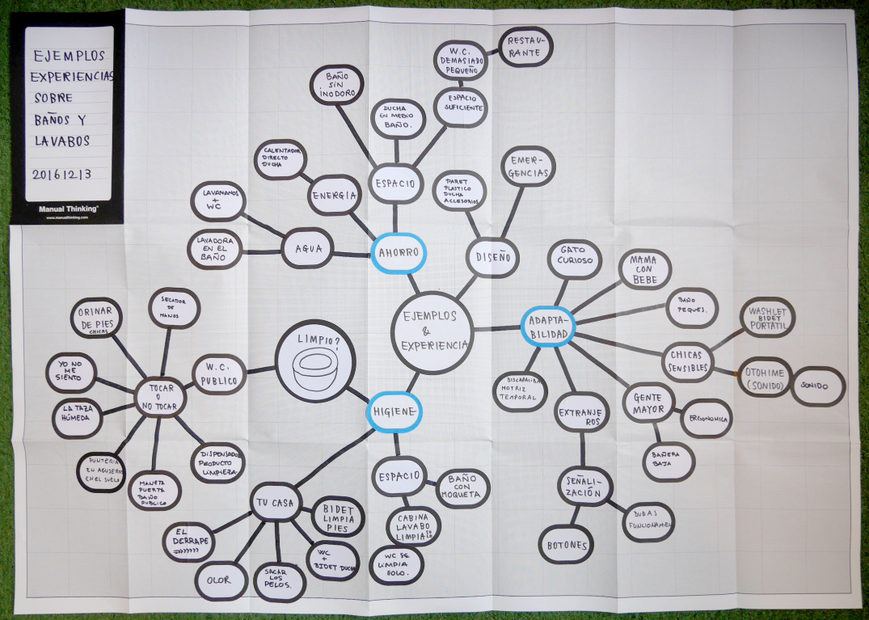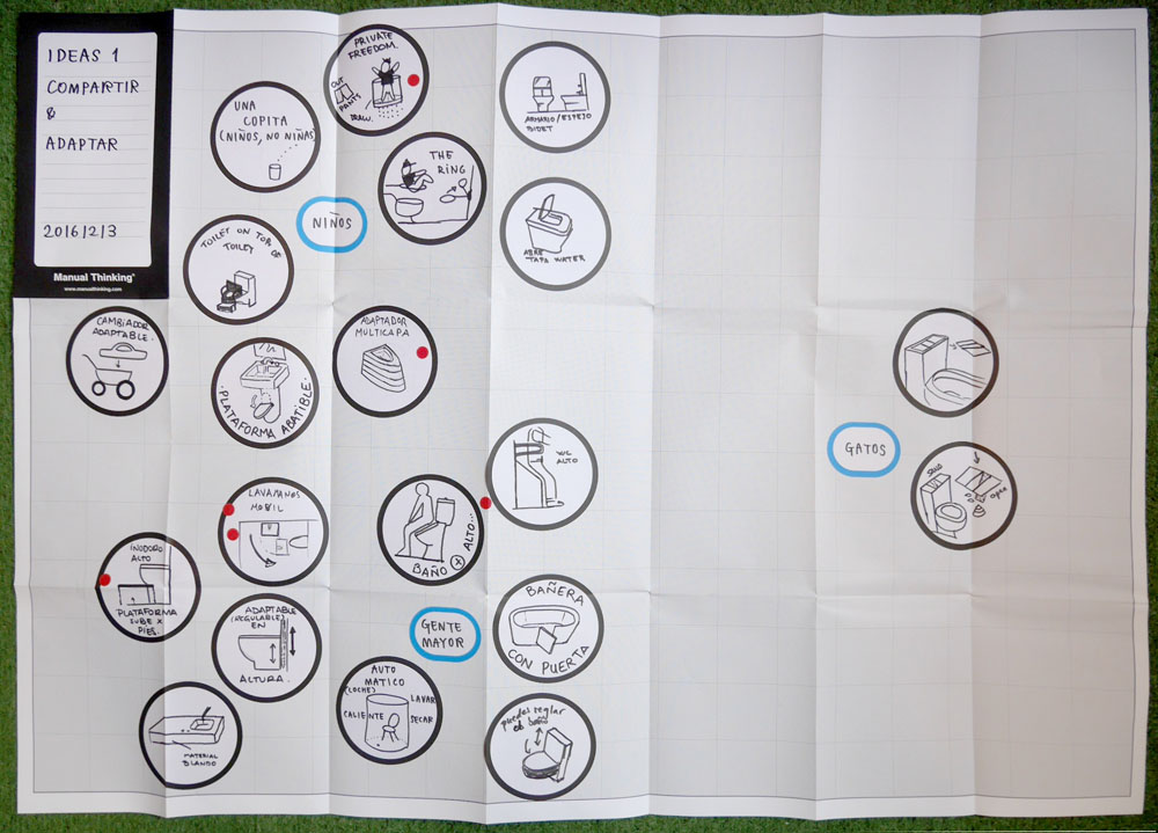Interview with Tomoko Sakamoto
06 / 23 / 2017
Interview with Tomoko Sakamoto, Japanese architect in charge of carrying out the Manual Thinking workshop for the winners of the Spanish edition of the Roca One Day Design Challenge 2016.
One Day Design Challenge: What would be in your opinion the value of a physical tool like Manual Thinking at a time of maximum expansion of digital apps such as Evernote, Trello, Freemind and other organization and teamwork applications?
Tomoko Sakamoto: Manual Thinking, a physical element made up of a foldable map and removable tags, helps us to create or consider an issue together and at the same time. Digital apps, on the other hand, are very useful to share our ideas with others, but I think that their use is more individual. The approach is different. With the first system, ideas are jointly developed, while in the second case apps help you to communicate what you have done by yourself to your working network.
If there is a physical element, it can be touched, written, and moved in front of all your colleagues. And we can also share the processes, not only the results.
But Manual Thinking is not a tool “against” digital apps, as the “results” of the maps are always shared with digital means. It is a previous step in the process.
The meaning of the name “Manual Thinking” comes from “thinking with your hands.” That is, we should not “think first and then act or visualize,” we should “think and visualize at the same time.”
ODDC: How did you address the workshop with Roca? What was the starting point?
TS: As this workshop is a prize for the winners of the Challenge, I have imagined it as a very festive, creative and educational event.
I wanted us to come up with incredible ideas, hopefully, some of them feasible as well, to enjoy ourselves and feel that we are able to consider many things and laugh while sharing our experiences.
ODDC: What were the results you obtained?
TS: There were really incredible ideas. These young winners are really curious and open to many cultures. All of them had plenty of experiences, both good and bad, after visiting toilets all around the world. And sharing those moments was like opening the tap to a torrent of energy and creativity.
Afterwards, we processed all the information in order to extract some issues which would then lead to some possible ideas we could work on: How can we share the toilets with others (children, elderly people, even pets!)? How can we keep public toilets clean and prevent them from becoming a place “where we do not wish to touch anything”? How can we save water, energy and space?
Taking advantage of the participation of Bernat Llonch, former designer of Roca products, who was present at this workshop, we were able to examine all ideas from the point of view of the users and the manufacturers at the same time, and therefore the session was both professional and educational.
ODDC: ¿How can Manual Thinking be useful as a working tool or methodfor designers?
TS: First of all it can be used to correctly analyze the conditions and starting point and share them with everyone involved in the project (the design team, the customers, the users, etc.) Secondly, it is useful to develop ideas, a process that can also be done in teams. With Manual Thinking we will be able to generate many stimulating ideas from all members before starting to produce the prototypes. It is a great advantage to search for more possibilities with the best quality and from many different points of view.
ODDC: How do you personally apply Manual Thinking?
TS: I use it for work, to teach and also on a personal level. In the work sphere, first I prepare a presentation of the projects and possible issues with Manual Thinking, in this way I can discuss the approach with my customers instead of only presenting “my” ideas. It is really very useful. And everyone says “Wow.”
I also teach and do workshops for students and young professionals at MOB (Makers of Barcelona), in which we use Manual Thinking to develop ideas based on their projects (business start-ups, architecture workshops, etc.). Or I sometimes carry out workshops at my children´s school to analyze issues, think of ideas for improvement and solve problems.
On a personal level, Manual Thinking suits me well when I wish to have a general vision of issues that concern me (work, family matters, etc.).
A short while ago I used Manual Thinking with my eldest son to decide which high school he would go to next year. We compared many factors (pros and cons) of both high schools we liked best. In the beginning, I wanted him to go to school A but in the end, after thinking together with Manual Thinking and analyzing all factors, my son decided to go to school B.
I think that without Manual Thinking this decision would not have been so easy to take and I would have always been in doubt that we had not analyzed it sufficiently. Now I am convinced that my son has taken the right decision.
ODDC: Has this tool changed the way you prepare the projects?
TS: Absolutely! The best I have learnt is not to have a one-way pattern of thinking, focusing on one idea or one first impression. Now I am prepared to have a more open vision and to be able to compare other points of view and improve the final result. Moreover, with this tool we do not need to “compete” with anyone, as it promotes collaboration. The key factor is to organize, listen, participate and improve.
This has helped me to have a healthier mentality, with less stress and anxiety, mainly when I think I have too many things to do.




